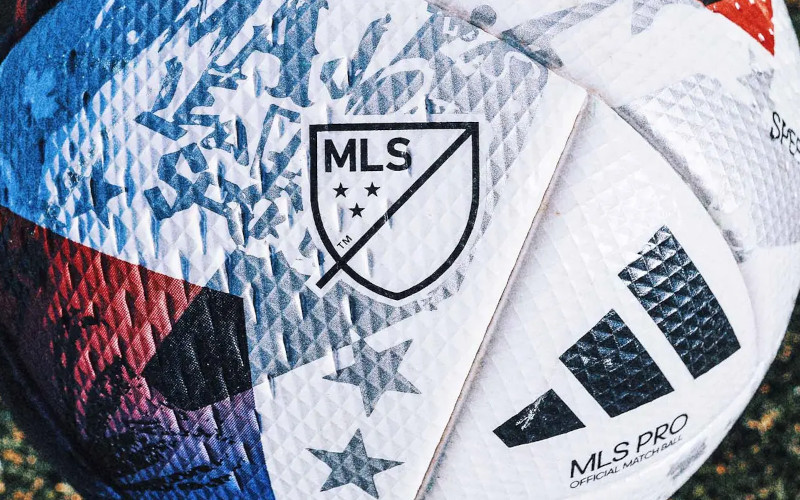The MLS playoffs are a defining moment in the league’s annual calendar. For soccer enthusiasts, it is the most anticipated time of the year as they look forward to watching their favorite teams battle it out for the coveted MLS Cup. However, understanding how the playoffs work can be quite challenging, especially for new fans who are not familiar with the league’s format.
MLS is unique compared to other professional soccer leagues worldwide. It features a playoff system at the end of its regular season, which determines its champion. This system is different from that of European football leagues, where teams compete in a round-robin format throughout a season, and the team with the most points at the end of that season is declared champion.
In contrast, MLS operates through a 34-game regular season played each year – 17 home and 17 away. The regular season includes 29 teams split into two conferences: Eastern and Western Conferences. Each team plays against every other team twice, with one game being played at home and another away.
Regular Season and Conference Standings
The MLS playoffs begin immediately after the regular season ends and feature twelve teams – seven from the Eastern Conference and five from the Western Conference – competing for glory. The teams that finish first in each conference earn an automatic berth into the quarter-finals, while those finishing second through fourth qualify for Conference Semifinals.
For teams finishing fifth through seventh in each conference, there is still hope as they get to participate in a “play-in” game called Wild Card Round. This single-elimination match ensures that only two teams remain for each conference semi-final round.
It should be noted that seeding during playoff games depends on how well each team performed during their respective conference championships or Wild Card Round matches. Hence, it is critical for every team to give their best performance if they want to progress to the later stages of this tournament.
Playoff Format
The playoffs for MLS are one of a kind and set it apart from other professional sports leagues in North America. The structure of the playoffs has changed over time, but it currently involves twelve teams vying for the MLS Cup.
Following the regular season, the top seven teams from each conference qualify for the postseason. The team with the highest points in each conference receives a bye to the Conference Semi-Finals, while those ranked second through fourth earn a spot in the Conference Quarter-Finals. Conversely, teams ranked fifth through seventh must compete in a one-and-done Wild Card Round. This eliminates all but two teams before each Conference Semi-Final round.
The Wild Card Round is composed of four lower-seeded teams from both conferences competing in two single-elimination matches. The victors progress to play against their respective conference’s top-seeded team.
On the other hand, there are eight matchups that take place during the Conference Quarter-Finals featuring two-home-and-away series or aggregate scoring systems. The team with more goals at the end of this series moves on to participate either in Conference Semi-Final or Final rounds.
The Conference Semi-Finals also follow a similar format as the Quarter-Finals, but instead of having eight teams playing against one another, there are only four matchups between the six remaining clubs. These rounds further narrow down competitors until only two sides emerge victorious and move on to compete for ultimate glory.
Finally, there are two Conference Finals where Eastern and Western Conference champions face each other over a home-and-away series or aggregate scoring system. It is worth noting that higher-seeded clubs get a home-field advantage during these rounds, which plays an essential role in determining who advances to MLS Cup Final.
Lastly, after all these rounds come to an end, only two remaining sides will participate in MLS Cup Final – MLS’s championship game held annually since 1996. This match takes place at a predetermined venue and features one game where every player gives their best performance, hoping to lift up their club’s name as champions of North American soccer.
Number of Teams
The number of teams that qualify for the MLS playoffs has varied over the years. In 2023, there are 29 teams in the league, and 18 of those teams will make it to the postseason. This means that just over half of all MLS teams will have a chance to compete for the championship.
MLS’s decision to include more than half of its teams in postseason play reflects its aspiration to create a competitive and exciting environment where every club has an opportunity to win. The playoff format ensures that even lower-seeded clubs have a fighting chance, given that they can knock out high-seeded sides in single-elimination games or two-leg series.
Compared to other North American professional sports leagues, like Major League Baseball (MLB) and National Basketball Association (NBA), which both feature ten qualifying teams out of thirty overall, MLS’s format seems generous. However, compared to NHL and NFL systems which allow more than half their participating clubs into playoffs -16 out of 31 in NHL and 14 out of 32 in NFL – it is moderate.
MLS’s current playoff system also allows for higher-seeded clubs to receive home-field advantage during matches. This element ensures that these sides get an extra boost from their fans’ support as well as familiar surroundings during critical games.
Overall, while some may argue that MLS should reduce the number of playoff qualifiers to increase competitiveness or keep it at par with other leagues, others might say it is fair since almost all franchises have a fighting chance toward winning the MLS Cup title each year. Nevertheless, what matters most is how every team performs on the pitch when playoffs come around!
Seeding and Matchups
The post-season playoffs in MLS are quite unlike those found in other professional sports leagues across North America. Over the years, the format has undergone significant changes and now sees 12 teams battling it out for the coveted MLS Cup.
Understanding the seeding and matchups of the MLS playoffs is essential to appreciating how the post-season works. The top seven teams from each conference qualify and are then seeded based on their regular season points total. Higher seeds enjoy an advantage as they have a better chance of securing home-field advantage throughout the playoffs.
The wild card round kicks off with lower-seeded sides competing against each other in a single-elimination match. Winners advance to face higher-seeded teams in subsequent rounds, and from there on, it all comes down to matchups. For example, if the top seed in one conference plays against the bottom seed in another conference, it is known as a cross-conference matchup. This type of matchup can create exciting scenarios where two very different styles of play clash.
Once all wild card games have been played, there are Conference Semi-Finals and Finals. These rounds feature two-leg series between teams within each conference. Home-field advantage goes to the team with a better regular-season record.
Finally, after all these rounds come to an end, we have reached the MLS Cup Final. This game determines which team will be crowned champion for that year’s MLS season.
Wild Card Round
In some years, the MLS playoff format includes a Wild Card round. The Wild Card round is played by teams that finished in between seventh and tenth place in their respective conferences. The seventh-place team plays against the tenth-place team, while the eighth-place team faces off against the ninth-place team. The winners of these matches advance to the Conference Semi-Finals.
The Wild Card round provides an opportunity for lower-seeded teams to make a run toward the MLS Cup Final. In recent years, we have seen several teams who started in this round go on to win it all.
While some fans may view the Wild Card round as unnecessary or unfair, it adds excitement and unpredictability to the playoffs. It also gives teams who might have otherwise missed out on the postseason a chance to prove themselves.
It’s important to note that not every year features a Wild Card round. MLS has made changes to its playoff format over time, with different variations utilized depending on league expansion and scheduling considerations.
Regardless of whether or not there is a Wild Card round, one thing is certain: once the playoffs begin, anything can happen. It’s up to each team to step up and perform when it matters most if they hope to lift the MLS Cup at the season’s end.
Conference Semi-Finals & Finals
Following the conclusion of the wild card round, the surviving teams will progress to the conference semifinals. This stage involves a two-part encounter, where each side plays one match at their own arena and another on their rival’s turf. The team holding the better seed will enjoy a home advantage for the second leg of this contest.
The triumphant squad from each conference semi-final series will then proceed to vie for glory in the conference finals. The conference finals are also a two-leg series, with each team playing one home game and one away game against their opponent. Similar to the semi-finals, the team with the higher seed will host the second leg of this series.
Winners of each conference final will then proceed to play in MLS Cup Final, which is a single match held at a predetermined neutral location. The winner of the MLS Cup Final is crowned as MLS champions for that season.
It’s important to note that all playoff matches can potentially go to extra time and penalty kicks if necessary in order to determine a winner. This adds an exciting element of unpredictability to the playoffs and ensures that fans are kept on edge throughout every match.
Overall, both Conference Semi-Finals and Finals are crucial stages in determining which teams advance to MLS Cup Final and ultimately have a chance at being crowned as MLS champions for that season. These rounds often feature high-stakes matchups between top teams from each conference and can provide some of the most thrilling moments in professional soccer!
MLS Cup Final
The MLS Cup Final stands as the apex of the MLS playoffs, determining the champion of Major League Soccer on a yearly basis. This ultimate game occurs at a predetermined venue selected through bidding. The two winning teams from their respective conferences in the playoffs fiercely compete for the coveted trophy.
The MLS Cup Final is a thrilling event brimming with suspense and excitement as both teams battle for supremacy. It presents an occasion for players to exhibit their talents on a national platform and for fans to witness history unfold before them.
The ambiance at the MLS Cup Final exudes electric energy, with thousands of supporters fervently cheering on their team from the stands. Fans unite to express their love of soccer while bearing witness to some of North America’s top-notch players competing at the highest level.
Recent years have borne witness to unforgettable moments during MLS Cup Finals. From stunning goals to last-minute heroics, anything can happen during this highly anticipated event.
One thing spectators can always count on during an MLS Cup Final is a high level of competition. Both teams will leave everything they have on the field in pursuit of victory, making for an intense and thrilling match that keeps fans on edge until the very end.
Regardless of who comes out on top, one thing is certain: The MLS Cup Final never fails to deliver excitement and entertainment for all those involved – players, coaches, and fans alike – making it one of the most significant events in American sports.
Summary
In conclusion, the MLS playoffs are an exciting time for soccer fans in North America. Understanding how they work and how many teams are involved is crucial to fully appreciate the drama and excitement that comes with this tournament. From the regular season and conference standings to the playoff format and a number of teams, there are a lot of elements to consider when it comes to the MLS playoffs. Whether your team is competing or not, following along with the action can be a thrilling experience. So take some time to learn about the playoff format, grab some snacks, and enjoy watching some of North America’s best soccer teams compete for the MLS Cup.




